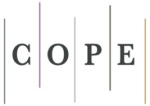Author Guidelines
Manuscript format
The article should at least consist of these parts: Introduction, Literature Review and Hypothesis Development (only literature review for qualitative research), Research Method, Result and Analysis, Conclusion and Reference. Acknowledgment (if any) should be placed after the Conclusion and before the Reference. The article must be written on A4 paper size with 10pt font size and single spacing. Page margin should 2,54 cm for all sides (top, bottom, left and right). The article should be written efficiently in approximately 10 pages. All pages must be numbered, including reference. Authors are encouraged to use Mendeley's application for citation and referencing. The manuscript must follow the JUMAD template of the manuscript. Template for authors can be downloaded Journal Template
Title Manuscript
Title, written in Indonesian. Title in Indonesian should consist of no more than 16 words. The name should not bear any title (Dr., Prof., etc). The author's name should be written in a complete mailing address should be provided. Also, please include an e-mail address for the corresponding author.
Abstract
The abstract comes after the title page in the text. The abstract must be integrated and independent consisting of introduction and objectives, methods, results, conclusions, and suggestions. But the abstract must be written as a single paragraph. References must be avoided. Also, nonstandard or unusual abbreviations should be avoided, but if necessary, abbreviations must be defined in their first mention in the abstract itself. Abstracts must be written using 100 to 200 words that have no references and should also be followed by keywords of 3-5 words.
Introduction
A brief introduction of the general study should be started (try a maximum of one paragraph). State of the art (a brief review of literature or previous research) to justify a statement of novelty or the significance or new contribution or originality of this article. Try to have a reference article from the journal of the last 10 years that reinforces the justification of originality. Gap analysis or statement of the gap (originality) or novelty (novelty statement) or the unique difference of this study compared to previous studies, also from the important side of whether the research was conducted. Problems and/or hypotheses (if any) and/or research objectives in this article.
Research Methods
The methodology section contains the approach used in producing scientific articles. Specifically for scientific research articles, the methodology section includes research methods, populations and samples, and data analysis steps.
Results And Discussion
(what / how) whether the data presented has been processed (not raw data), stated in tables or figures (choose one), and given information that is easy to understand? Write down the findings or findings, but don't discuss the discussion here;
(why) in the discussion section, there are a link between the results obtained and the basic concepts and/or hypotheses. The discussion made must be supported by real and clear facts.
(What else) is there compatibility or conflict with the results of other people's research? (Therefore, there must be references to other literature, especially literature mentioned in the state of the art of previous research). It may also be written about the implications of research results both theoretical and application.
Conclusion
Describes the research conclusion, limitations of the research, and suggestions for conducting future research.
References
References are written using the American Psychological Association (APA) style. Valid for references in text, tables, and figures. The article writing process must use a reference manager program (Mendeley, etc.). Updated reference libraries especially those used to justify originality or novelty (last 10 years). Keprimeran reference literature, try at least 80% of the primary literature). If the book form literature should be a primary book (which contains direct research results, not a compilation of other people's research); Books containing theoretical concepts (secondary) may be used as a reference, but try only a maximum of 20%
Table and Figure
Tables and Figures should be given titles and numbers, while the source of table and figure are clearly and explicitly stated. The title of the tables and figure is typed in the center. The title of tables and figures should be written in bold. Sources of tables and figures should be placed under the table and figures, typed from the left margin. The format of the table should only use a horizontal line and omit any vertical lines.
Common Citation Formats in Reference according to APA 6 Style:
Ciuyono, A. C. (2018). Pengaruh Kepemilikan Institusi, Kualitas Audit, Profitabilitas, Dan Leverage Terhadap Post-IPO Survival. Jurnal Muara Ilmu Ekonomi Dan Bisnis, 2(1), 155. https://doi.org/10.24912/jmieb.v2i1.1706
Ghani, M. A. (2020). Restorasi Korporasi: Step by Step Membedah & Merancang Strategi Penyehatan Perusahaan (Revisi). Bogor: PT Penerbit IPB Press.
Junaedi, A. A., Winata, R. H., & Mutmainnah. (2021). Pengaruh Return On Asset Dan Return On Equity Terhadap Harga Saham Pada Pt.Unilever Indonesia Tbk Periode 2016-2020 (Sebelum Dan Dimasa Pandemi Covid-19). Jurnal E-Bis (Ekonomi-Bisnis), 5(2). https://doi.org/10.37339/e-bis.v5i2.665
Sudarno, Renaldo, N., Hutahuruk, M. B., Junaedi, A. T., & Suyono. (2022). TEORI PENELITIAN KEUANGAN. Malang: CV. Literasi Nusantara Abadi.








